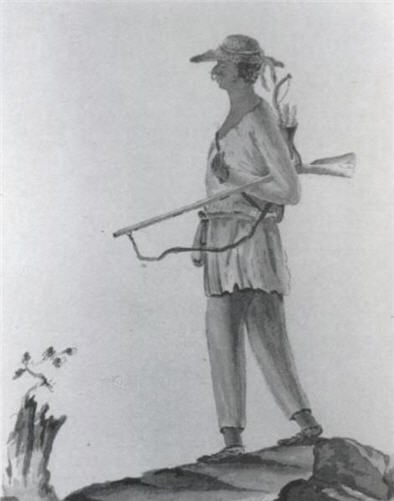Last updated: April 23, 2025
Article
The Stockbridge Militia and the Battle of Van Cortlandt’s Woods

Johann Von Ewald / Public Domain
The Stockbridge Militia: A Legacy of Courage and Loss
In the late 18th century, as European powers and emerging American colonies battled for control of North America, Indigenous nations found themselves on the front lines—not just as bystanders, but as decisive participants in shaping the continent’s future. Among the most notable of these Indigenous allies were the Stockbridge Mohicans.An Era of Global Conflict and Indigenous Displacement
Between 1700 and 1800, conflicts such as the French and Indian War, the American Revolution, and the War of 1812 redrew the political map of North America. While these wars are often told through the lens of colonial or national power, they also marked a prolonged period of upheaval and dispossession for Indigenous peoples.
The Stockbridge Mohicans, along with the Oneida, Tuscarora, and other Indigenous nations, allied with the American colonists in their struggle for independence from Britain. Many of these communities hoped that their military support would ensure recognition of their sovereignty and protection of their lands. Instead, the outcome was often betrayal, displacement, and profound cultural loss.
The Stockbridge Militia
The Stockbridge Militia was an Indigenous infantry unit made up of Mohican, Wappinger, and Munsee men from Stockbridge, Massachusetts. Known for their discipline and courage, they fought in some of the most significant campaigns of the American Revolutionary War, beginning with Bunker Hill. Their military service reflected both a commitment to the Patriot cause and a desire to protect their own communities and homelands from colonial encroachment.
Among their leaders was Sachem Daniel Nimham, the last hereditary sachem of the Wappinger people. Nimham had long fought for Indigenous land rights, even traveling to England to petition the Crown for justice. In the war, he joined the Continental Army with his son, Abraham, and fought with distinction.
The Battle of Van Cortlandt's Woods: August 31, 1778
On a summer day in 1778, the Stockbridge Militia faced their most tragic battle. While scouting British movements near the northern edge of Manhattan, in what is now Van Cortlandt Park in the Bronx, the unit was ambushed by British and Loyalist forces led by Lieutenant Colonel John Graves Simcoe. The clash, also known as the Battle of Kingsbridge or the Stockbridge Massacre, resulted in the deaths of approximately 40 Indigenous soldiers, including Daniel and Abraham Nimham.
Outnumbered and surrounded, the militia fought bravely before being overwhelmed. This devastating loss effectively ended the Stockbridge Militia’s role as a fighting force and marked a turning point in their community’s relationship with the new American nation.
After the Battle: Loss, Displacement, and Survival
The survivors returned to Stockbridge only to find that their land had been taken—lost through mortgages, debts, or outright fraud. Even as they had fought to secure a future within the new republic, settler expansion and land speculation were already forcing them out.
This pattern of broken promises and encroachment was tragically common for Indigenous communities. The fur trade, missionary activity, devastating new diseases, and war had already transformed Mohican life. Now, legal and economic pressures ensured their removal from their homelands in Massachusetts. Over time, the Stockbridge Mohicans moved westward near Oneida Lake in New York to Indiana, and finally to what is now Wisconsin.
Legacy and Ancestral Homelands
Today, the Stockbridge-Munsee Community remembers the Hudson Valley as their ancestral homeland. Places like the Martin Van Buren National Historic Site in Kinderhook, New York, sit on lands once tended and protected by the Mohican people.
The courage, sacrifice, and continued resilience of the Stockbridge Militia remain a powerful part of the American story. Their service during the Revolution reflects a complex chapter in our nation’s history—one in which Indigenous people fought for freedom, only to have their own denied. Their legacy is not just one of loss, but of enduring strength and connection to the land they called home.
